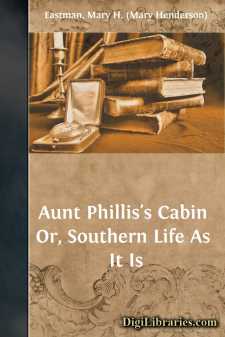Categories
- Antiques & Collectibles 13
- Architecture 36
- Art 48
- Bibles 22
- Biography & Autobiography 813
- Body, Mind & Spirit 142
- Business & Economics 28
- Children's Books 15
- Children's Fiction 12
- Computers 4
- Cooking 94
- Crafts & Hobbies 4
- Drama 346
- Education 46
- Family & Relationships 57
- Fiction 11828
- Games 19
- Gardening 17
- Health & Fitness 34
- History 1377
- House & Home 1
- Humor 147
- Juvenile Fiction 1873
- Juvenile Nonfiction 202
- Language Arts & Disciplines 88
- Law 16
- Literary Collections 686
- Literary Criticism 179
- Mathematics 13
- Medical 41
- Music 40
- Nature 179
- Non-Classifiable 1768
- Performing Arts 7
- Periodicals 1453
- Philosophy 64
- Photography 2
- Poetry 896
- Political Science 203
- Psychology 42
- Reference 154
- Religion 513
- Science 126
- Self-Help 84
- Social Science 81
- Sports & Recreation 34
- Study Aids 3
- Technology & Engineering 59
- Transportation 23
- Travel 463
- True Crime 29
Dahcotah Life and Legends of the Sioux Around Fort Snelling
Categories:
Description:
Excerpt
I.
SIOUX CEREMONIES, SCALP DANCE, &c.
The Sioux occupy a country from the Mississippi river to some point west of the Missouri, and from the Chippewa tribe on the north, to the Winnebago on the south; the whole extent being about nine hundred miles long by four hundred in breadth.
Dahcotah is the proper name of this once powerful tribe of Indians. The term Sioux is not recognized, except among those who live near the whites. It is said to have been given by the old French traders, that the Dahcotahs might not know when they were the subjects of conversation. The exact meaning of the word has never been ascertained.
Dahcotah means a confederacy. A number of bands live near each other on terms of friendship, their customs and laws being the same. They mean by the word Dahcotah what we mean by the confederacy of states in our union. The tribe is divided into a number of bands, which are subdivided into villages; every village being governed by its own chief. The honor of being chief is hereditary, though for cause a chief may be deposed and another substituted; and the influence the chief possesses depends much more upon his talents and capacity to govern, than upon mere hereditary descent. To every village there is also a war-chief, and as to these are ascribed supernatural powers, their influence is unbounded. Leading every military excursion, the war-chief's command is absolute with his party.
There are many clans among the Sioux, and these are distinguished from each other by the different kinds of medicine they use. Each clan takes a root for its medicine, known only to those initiated into the mysteries of the clan. The name of this root must be kept a secret. Many of these roots are entirely destitute of medicinal power. The clans are governed by a sort of free-masonry system. A Dahcotah would die rather than divulge the secret of his clan. The clans keep up almost a perpetual warfare with each other. Each one supposes the other to be possessed of supernatural powers, by which they can, cause the death of any individual, though he may live at a great distance. This belief is the cause of a great deal of bloodshed. When a Dahcotah dies, it is attributed to some one of another clan, and revenge is sought by the relatives of the deceased. All their supposed supernatural powers are invoked to destroy the murderer. They first try the powers of their sacred medicine, imagining they can cast a fatal spell on the offender; if this fail, they have recourse to more destructive weapons, and the axe, knife or gun may be fatally used. After the supposed murderer is killed, his relations retaliate, and thus successive feuds become perpetual.
The Dahcotahs, though a reckless, are a generous people, usually kind and affectionate to their aged, though instances to the contrary frequently occur. Among the E-yanktons, there was a man so feeble and decrepit from age as to be totally unable to take care of himself; not being able to walk, he occasioned great trouble....



